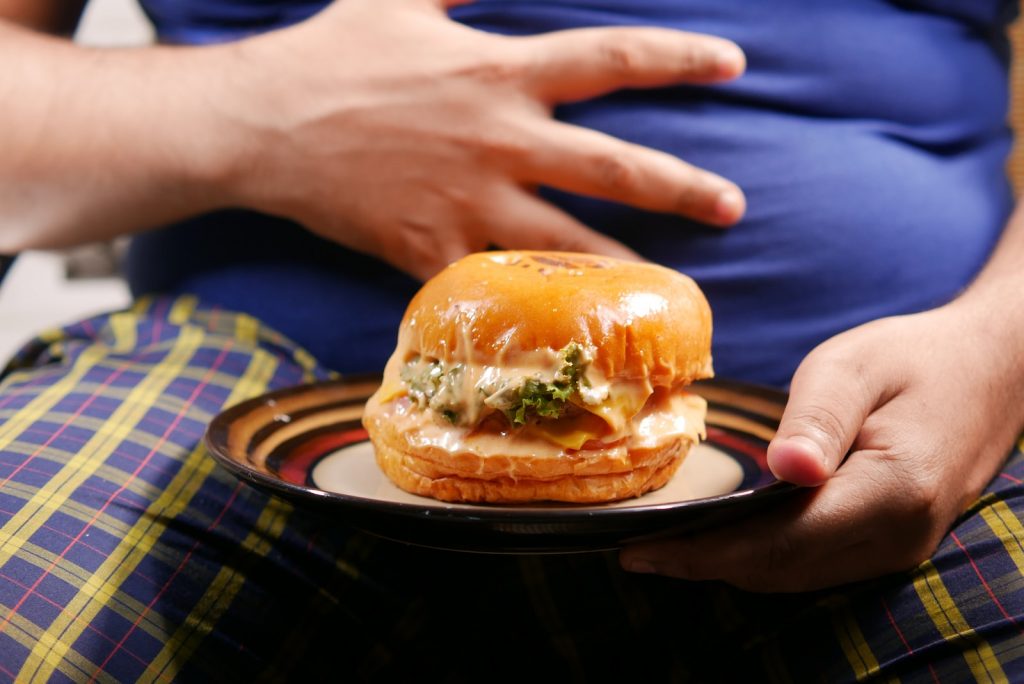This post may contain affiliate links, which means that I may earn a commission if you click on the link, with no cost for you. It’s one of the ways I support my blog. You can read more about this here.
Introduction
Have you found yourself in a constant cycle of restrictive diets? When starting a weight loss journey, it’s easy to think only of what you can’t eat and what you’ll miss out on. Diets are always seen as something restrictive and have rules that must be followed to succeed. But having this diet mentality only makes losing weight harder, instead, you can give yourself unconditional permission to eat by focusing on healthy habits, having a positive mindset, and gentle nutrition.
I want to talk about how you can shift your focus from restrictive diets to having unconditional permission to eat. You can be free to enjoy all your favourite foods without the weight of guilt that comes along with a restrictive diet.

The Diet Mentality vs. Unconditional Permission
Diets are often pitched to us as the “miracle” solution for weight loss. But all diets work the same, calories in vs calories out, eat fewer calories than you burn. The appeal of more restrictive diets is often that they are faster. But restrictive diets are like quicksand, pulling you deeper into a cycle that’s hard to escape.
You may lose weight initially, but the real question is, can you stick with it for the long haul? The reality is that most restrictive diets just aren’t sustainable, the initial thrill of success fades. The key is to shift your focus from quick fixes to long-term well-being.
But there is a way to eat your favourite foods without the guilt trip, it involves letting go of rigid food rules, listening to your body’s hunger and satiety cues, and thinking of long-term success rather than a quick fix. Giving yourself unconditional permission to eat allows you to eat without the burden of judgment, giving you a healthier relationship with food and, ultimately, yourself.
The Importance of Intuitive Eating
You’ve probably heard of intuitive eating, and in theory, it sounds like a simple concept. It involves listening to your body’s signals and learning to recognise when you’re truly hungry and when you are full. But if, like me, you have struggled with weight issues and a diet mentality for a long time, this isn’t so easy to put into practice. The process of unlearning ingrained habits that have been established over the years is not an overnight fix and requires some work.
Intuitive VS Mindful Eating
The best place to start with intuitive eating is to practice mindful eating. Mindful eating and intuitive eating are related and share some common principles, but they have a few different focuses and approaches. Mindful eating is something that can be practiced at each meal, it’s about being fully present and engaged in the act of eating, learning to savour and enjoy your meal.
Whereas intuitive eating takes the concept of paying attention to internal cues to a deeper level. It involves listening to the body’s signals not only in terms of hunger and fullness but also in response to cravings and specific foods. Intuitive eating encourages a more holistic understanding of the body’s needs.
Giving yourself permission to eat can be liberating, but it helps to have a strategy. Learn more about this approach in Intuitive Eating and Weight Gain.

Practical Mindful Eating Tips
You can start incorporating mindful eating into your routine with small, manageable steps. And over time, eating intuitively will become more natural to you. Here are some steps to get started:
- Avoid Distractions: Turn off the TV, put your phone away, and create a quiet space for your meal. Minimizing distractions allows you to fully focus on eating.
- Engage Your Senses: As you eat, pay attention to the textures, tastes, and smells of your food. Take in the details.
- Eat Slowly and Chew Thoroughly: Savour each bite by eating slowly and chewing your food thoroughly. This not only allows you to appreciate the taste but also gives your body time to signal when it’s satisfied.
- Put Your Knife and Fork Down Between Bites: Instead of keeping your knife or fork in your hand throughout the entire meal, put them down between bites. This encourages a more mindful pace of eating.
- Check-in with Hunger and Fullness: Pause periodically during your meal to assess your hunger and fullness. Ask yourself how hungry you are before starting and how satisfied you are as you continue to eat. If you feel full, honour that fullness and think about saving the rest for later. And, importantly, if you’re still hungry, allow yourself to eat more! See my post on finding more satiating meal combos.
Intuitive eating is a journey in itself. Embrace the process, and don’t pressure yourself to master it overnight. Begin with one meal or snack a day, gradually incorporating mindful eating practices into your routine. The goal is progress, not perfection!
Check out Mindful Eating 101 to make eating a more enjoyable experience
Overcoming Fear and Guilt Surrounding Food
Improving your relationship with food often involves confronting fears and guilt that have become deeply ingrained by diet culture. It could be the fear of overeating, the loss of control, or the weight of guilt and shame.

If a certain food has been on your “bad” list for a while, it can be really hard to view it as anything other than that. And while there are foods that are healthier than others, all food has a place in your diet and shouldn’t be labelled as “good” or “bad”. Challenge the fear by reintroducing these foods slowly with a mindset of flexibility and you can begin to remove the barriers that fear has put up.
Know that your worth is not determined by what’s on your plate. When faced with a challenging food choice, replace self-criticism with self-compassion, allowing room for growth and learning. Instead of viewing moments of deviation as failures, see them as insights into your relationship with food. Learn to analyse these experiences without judgment. What triggers led to this choice? What emotions were you feeling? See my previous post on Emotional Eating!
You can enjoy food without guilt and still love your body. Dive into this topic in my post on Body-Positive Weight Loss.
Practical Tips for Implementing Unconditional Permission To Eat
Gradual Integration
- Identify and Challenge Food Rules:
- Question and challenge ingrained food rules
- Recognize external influences and question them
- Experiment with Different Foods Without Restrictions:
- Take small steps to mix-up your food choices
- Explore new flavours and meals without judgment
Building a Positive Relationship with Food
- Mindful Eating Practices:
- Engage all your senses during meals
- Chew slowly and savour each bite mindfully
- Avoid distractions
- Check in with your body’s signals
- Enjoying Food Without Guilt or Anxiety
- Shift your mindset to focus on pleasure and satisfaction.
- Release guilt associated with certain foods, embracing balance.
The Impact of Unconditional Permission To Eat on Sustainable Weight Loss
Food freedom is rooted in long-term habits that support your overall well-being. By learning to listen to your body’s signals and responding with gentle nutrition, you’re more likely to have a balanced and sustainable relationship with food, which will hopefully lead to better weight management.
That being said, I understand there will be a fear of gaining weight, but that fear is often what keeps us in a cycle of restrictive eating. So changing the focus from weight to overall well-being is important here, trust your body and listen to its hunger & satiety cues.
How To Promote Satiety
A big step in my weight loss journey was understanding the hormones Leptin and Ghrelin (I cover these in detail in both my FREE Nutrition eBook and my Complete Weight Loss Guide). Ghrelin is the hunger hormone and is there to signal to your body that it’s time to eat. Leptin is the satiety hormone, signaling to your body that you’ve had enough.
These hormones combined are responsible for weight management, but diets high in ultra-processed foods can lead to us missing the cues these hormones are sending. Not to mention that the combination of salt, sugar, and fat in a lot of ultra-processed foods can stimulate reward centres in the brain – which is actually by design, it’s called the “Bliss Point”.

- 80/20 Nutrition: Focus on eating whole nutrient-dense foods 80% of the time, but allow yourself treats for the other 20%. This doesn’t have to be exact, it can be 70/30 if you want, as long as the majority of your diet is whole foods.
- Protein: Helps suppress ghrelin and takes longer to be digested in the stomach, making you feel fuller, for longer.
- Fibre: Slows down digestion, which can lead to a sustained release of leptin, telling the brain that you are full.
- Healthy Fats: Slow down digestion and promote the release of leptin – so don’t be scared of fats!
Unconditional Permission to Eat: Conclusion
Weight loss doesn’t have to be a journey of restriction and rigid rules, having a positive mindset, introducing healthy habits, and practicing gentle nutrition will make the journey much easier. Think of all the things you can give your body, rather than what you can take away. Trusting your body’s signals and understanding how certain foods promote satiety will contribute to a more sustainable relationship with food.
It’s important that if you’re struggling, it’s important that you reach out for help. The Beat website has a list of helplines that may help.

